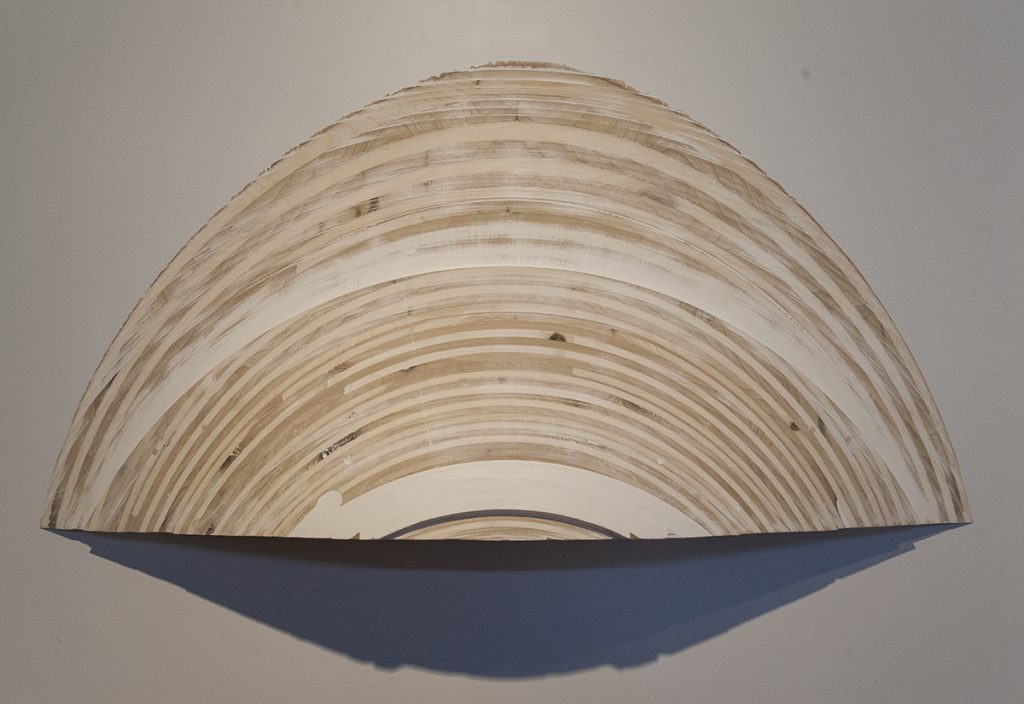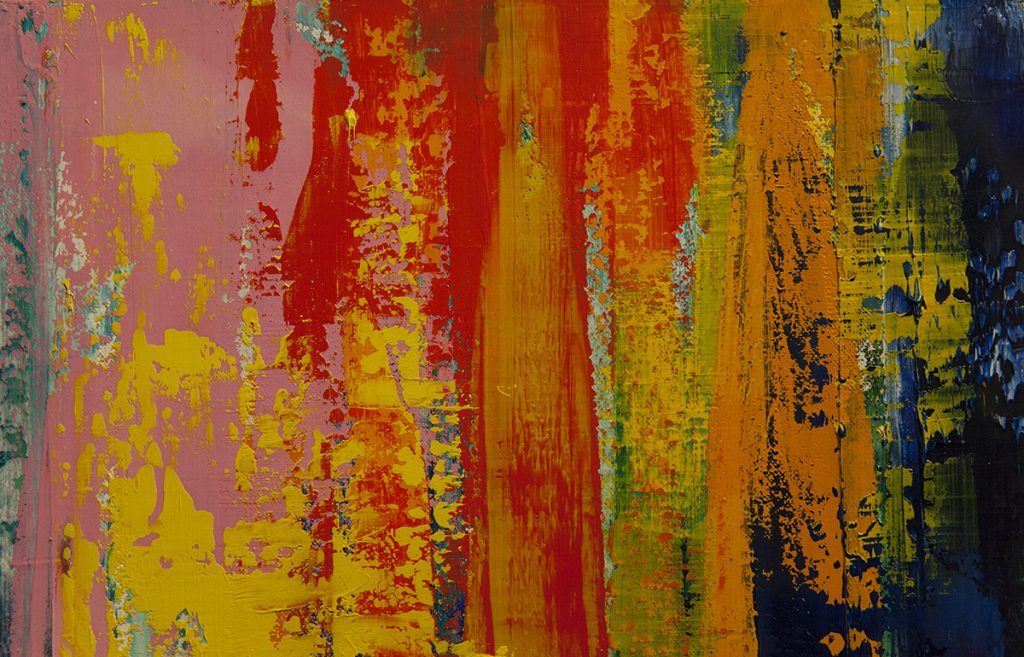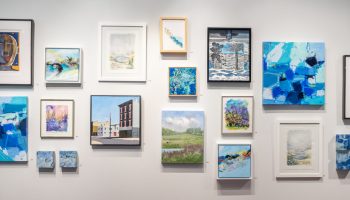“Gradations: A Sense of Successive Stages or Degrees” is the second and final exhibition presented in the Main Gallery of the Strohl Art Center this season. For the show, curator Judy Barie, the Susan and Jack Turben Director of VACI Galleries, has selected artworks by seven regional artists working in an unexpectedly wide range of materials — oil paint, ceramics, woven linen, blown glass, plywood, silk photography, encaustic and colored mylar. At first glance, the variety confused me, but reading Barie’s brief introduction helped me to see the “graduations” of form, color, scale or “degree,” which brought the works together into the very strong show. Viewers who accept Barie’s challenge to consider the subtle modulation or the implication of “successive stages or degrees” will find a rich dialogue among the varied works.

The exhibition has several high points, with David Henderson’s amazing wood sculptures among them. Henderson is a Brooklyn-based artist who has been working since the 1980s with computer-aided design software and industrial power tools to transform plywood into gorgeous sculptures. Henderson remarkably is able to make beautiful things out of the ugly material. He cuts and glues together plywood slabs, then carves the edges of the blocky forms with a power sander to make curvaceous wall sculptures. Looking at the arching forms of “Mountain” and “Punchard/Passacaglia,” I thought of African masks and medieval battle shields, while “Convolve 3” seemed to be inspired by 3-D digital rendering of birds in flight. Some might see, as I did, eroticism in the labial symmetries of “Come in She Said 2.”
Mia Tarducci’s paintings are equally stunning. Tarducci is a pure painter working in the mode of total abstraction. “Gradations” presents a brilliant installation of 12 large canvases mounted in a corner of the gallery looking like a single enormous painting. Each individual canvas is pleasure in its own — brightly colored, boldly brushed and energetic. Tarducci’s installation creates an unexpected spatial effect that none of the individual pieces has on its own, an effect that could be easily missed by casual viewers. Lines converge in the corner of the gallery where the painting grid comes together, creating a vanishing point that draws the eye into the distance. Thus, using the same tools Renaissance paintings did, Tarducci uses compositional geometry to draw viewers to a distant horizon in an invented landscape.

Lauren Mabry’s ceramic sculptures are extremely strong as well. I was most impressed by the way her entire visual vocabulary is related to a single thick-walled pot form. “Contain or Deliver I” started as a big, simple pot about 25 inches in diameter. By simply cutting off the bottom of the pot, Mabry turned it into a perfectly round circle with absolutely no utilitarian function. Upending it in the kiln, Mabry encouraged glazes to run into a brightly colored liquid puddle that hardened during firing into a base that holds the form up on end. By removing the bottom of the pot and letting the glazes run, Mabry breaks unspoken rules of ceramics, making her work feel transgressive and quite exciting.
Carrie Seid’s boxy wall sculptures hold their own against the larger, more baroque works in the exhibit. The shadowboxes employ a thin sheet of silk across the front to obscure Mylar constructions below. Although the delicate silk half hides the contents below, it also picks up and reveals the ambient light of the gallery, revealing its materiality in mysterious vibrations that change as the viewer’s body shifts in space. I was transfixed by the mysterious objects.
Tom Brydelsky’s wax-covered photographs are not as successful. Although attractive, layers of wax do not make the unremarkable photographs more remarkable. I admire Mary Giles’ woven linen bottles with hammered metal pieces and Margaret Spacapan’s two beautiful blown glass discs. But although both artists illustrate the curator’s ideas, the small-scale works are dwarfed in the show.
Patricia Briggs is curator and director of the Weeks Gallery at Jamestown Community College and her writing appears in Artforum, History of Photography, Woman’s Art Journal and elsewhere.






